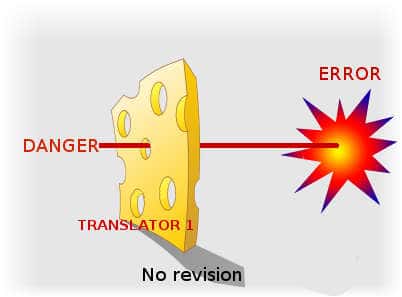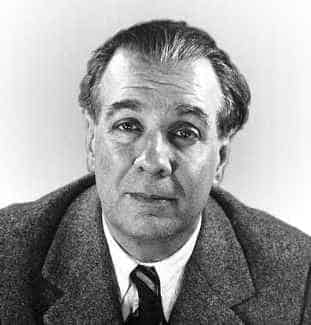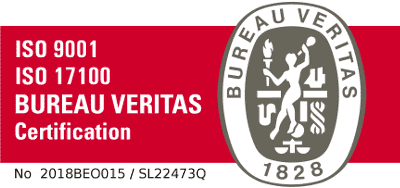Translation quality and quality assurance
High quality translation is what we offer. But what is translation, quality?
What do we mean by translation quality?
High translation quality (as opposed to translation services quality, see below) means a translation that is fit for purpose. But what does fit mean? Unfortunately there is a common misconception: many people think that a translation is either right or wrong.
While it is easy to point to typos or grammatical errors, these formalities are not the main sources of good or bad quality. Other elements such as readability and choice of precise phrases are usually more important in translation quality, but these are complex qualities that are more difficult to spot. Human language is complex and subtle, and translation quality can vary from poor over middling to excellent.
A high-quality translation is one that brings across as much as possible of the meaning. It conveys the subtleties of the text to readers in a way they will understand as the author intended. The translator must understand the author’s intention and the kind of readers targeted. Depending on the purpose and style of the original, this may demand considerable imagination and writing skills, or it may require precise knowledge of technical or legal terms.
But however much knowledge and skill is deployed, one essential quality for most purposes is simply readability. A text that says all the right things is not much use if no-one reads it. A good writer, and thus translator, can organise their sentences so that they flow well and are easy to read. This is more important for some purposes than for others, and it is also different from language to language. The kinds of construction commonly used in Serbian, for example, often sound heavy or confusing in English, and a good translator will re-arrange them.
Many authors have written books about translation quality, and some are readable for non-specialists. A great example is Experiences in Translation by Umberto Eco (best known for his cinematized novel The Name of the Rose).
When should I ask for especially high translation quality?
The translation quality you need depends on how you will use the translated text. To understand an internal memo is not demanding, but a contract must be precise. An advertising text, or one that defines your company in public view must be as close to perfect as possible since weaknesses may have long-lasting negative effects on your brand image; a truly well written text is attractive and informative, and can form a basis for the success of your enterprise.
How precise should a translation be?
The way a translator approaches a task depends on the purpose and context of the translation. For different purposes, qualities like precision, style and creativity have different roles. Here are some examples.
Legal translation
At one end of the scale, a contract needs an especially precise translation. Whether it is a pleasure to read or not is far less important than whether it is legally watertight. The consequences of a loose translation can be expensive.
Medical translation
Like all special technical fields, medical writing uses its own professional language or jargon. Here, the targeted reader is often a medical professional, so the precise use of special terms is important, even though non-medical professionals may not understand it. But it should still be well written.
Advertising materials
To translate an advertising slogan into a foreign language is quite different. The readers will have a different culture, they will be brought up with different stories and metaphors, so a literal translation is useless. Great creativity is needed to make sure the audience gets the right message, which may have to be expressed in a very different way from the original. It may be best to ignore the original text entirely and find new ways to express the same intention in a way the new audience will both understand and appreciate.

Precision required
A simple example of metaphor: When someone makes their work unnecessarily hard by starting from the beginning, an English person may say he does not need to re-invent the wheel. A Dane may say he is re-inventing the soup plate, a Serbian will re-invent hot water. Three European cultures, three different mental images – choose the right one and your audience immediately understands. For non-European cultures this is even more important.
What other kinds of quality are there?
Translation quality should not be confused with translation services quality. High quality translation services are those that systematically deliver high quality translations. To ensure this, we use a number of systematic quality assurance mechanisms.
What quality assurance mechanisms are there in translation?
Quality translation services are delivered by good translation project management. Translation quality factors include the following:
Clarifying the task
The project manager must be sure of the essential aspects of the job to be done and agree with the client. If the client is not sure, the project manager must help, offering their experience and professional knowledge of how translation tasks can best be done. A clear agreement on procedures, prices and deadlines is the first element of quality translation services.
Selecting the right translators
Halifax works with several hundred translators. Each of these has their own specialities: special knowledge of specific subjects, particular skills like precision, creativity in writing, knowledge of language variants etc. At Halifax we test each translator before adding them to the pool with whom we work. Quality translation services depend on knowing them and selecting the right ones for the job.
Organising revision
Revision of a translation by a second translator is always recommended for a text whose quality is important. Everyone makes mistakes, and for the one who makes them they can be difficult to spot. Revision is an essential part of a translation process according to the ISO17100 standard (see below) that is designed to ensure quality translation services.

A clear agreement
Coordinating the translator team
For a large job including several translators and/or a reviser, a coordination mechanism is essential. In this way translators can chat as the job proceeds to agree on preferred terms or how to understand certain phrases. Communication with the client is often needed too, e.g. when the meaning is ambiguous.
Organising a professional review
For some important documents, a professional review is recommended. This is a reading not by a translator but by a professional in the subject field, who can suggest more common or precise expressions or jargon, or clarify difficult concepts.
Checking the finished product
The project manager checks the final translation, and may use a proofing tool to check it for errors.
The ISO17100 standard says more about quality translation services (see below).
Other forms of quality assurance can be provided through the use of CAT tools, or proofing tools, which are computer applications that detect formal mistakes. Halifax uses a CAT tool called MemoQ and a proofing tool called X-Bench, among others.
Why is revision so important for translation quality?
For two reasons.
One is shown by the ‘Swiss cheese model’ (borrowed from HSE – Health, safety, Environment manuals). Everyone makes mistakes, and once you make a translation mistake, your brain has trouble seeing it. Only a different person will easily spot your mistakes, while you will spot theirs.
The second reason is that a dialogue between translator and reviser can bring out alternative translations and catch nuances that a single person might miss. It will always improve the quality of a translation, and is strongly recommended for any representative text. Quality translation services consist of the right combination of procedures.
What else can affect translation quality?
One of the difficulties in providing quality translation services is dealing with original documents of varying quality themselves. Every week, we translate a large number of documents between different European languages. Some of these documents are well-written – these can be quickly and easily translated into any language, leaving a high-quality product and a satisfied customer.
Unfortunately, some are not. There are many ways in which texts can be poorly written, leaving a translator struggling with opaque, ambiguous sentences. The result can be poor products, missed deadlines and unhappy clients. Translators are not alchemists, even the best cannot turn lead into gold. And if they did, the writer may complain of being mis-translated.
A translator must try to understand the meaning and style intended by the author. If these are unclear, the translator has the unpleasant task of deciding whether to guess, or to ask the project manager to ask the client for clarification. The latter takes time that can eat into deadlines; it may annoy the client who perhaps does not even know the author; or it may be pointless if the lack of clarity is found throughout the document.
A document should not be repetitive or unnecessarily complicated. Some suggestions (extract from the EU’s Writing for Translation, see below):
- Give the translator background information … and enough time to do a good job
- Plan your document. Consider who is going to read your text and how it will be used
- Use explanatory headings and summaries, and limit each paragraph to one idea
- Make sentence structure unambiguous, avoid long, complicated sentences
- Use the active voice
- Always use the same term for the same concept
- Avoid expressions that are specific to your own culture
- Avoid jargon and acronyms.
There are many books and publications on the subject of clear writing. You may be interested in the following:
Writing for translation, EC Translation Centre, 2010
How to write clearly, The European Commission
ISO standards for translation quality
International standards are a form of quality assurance. Standards are developed over years of work by teams of experts who understand the best ways of working. Many standards are coded in the ISO (International Standards Organisation) system.
Each standard defines good practice: procedures that reduce the risk of mistakes and make the process efficient. They also help to make it traceable, so that if a mistake should occur, we can look back and find why it happened. This enables us to learn from mistakes and improve our procedures.
A company is certified for a standard through an audit procedure by a certification body. The certificate carries the reputation of the certifying body, so it is important who that is. This body will make an audit every year before renewing the certification.
Halifax is certified for ISO17100 and ISO9001 by the reputed international agency Bureau Veritas.
What is the ISO17100 standard for quality translation services?
The modern translation standard ISO17100 (formerly the European norm EN15038), concerns the quality of the translation process, not translation quality itself. It names and defines the procedures to be used in translation project management.
There are requirements such as the choice and testing of translators and the combination of services that ensure a good translation. There must be a systematic approach to service provision, with all procedures documented and followed. There must also be continuous improvement mechanisms: at each audit we must show what improvements we have made to our systems.
What is ISO9001 Quality Management?
ISO 9001—Quality management is the basic management standard every responsible company should follow. More than a million high-quality businesses around the world are certified to ISO 9001. This standard shows our commitment to providing the highest quality services to our customers. The standard is frequently updated: the latest 2015revision offered a number of improvements.
Certification is based on quality management principles such as customer focus, leadership, involvement of people, process approach, system approach to management, continual improvement, evidence-based approach to decision making and mutually beneficial supplier relationships. Following ISO 9001 helps ensure that customers receive consistent, good quality products and services.
Read more about standards:







